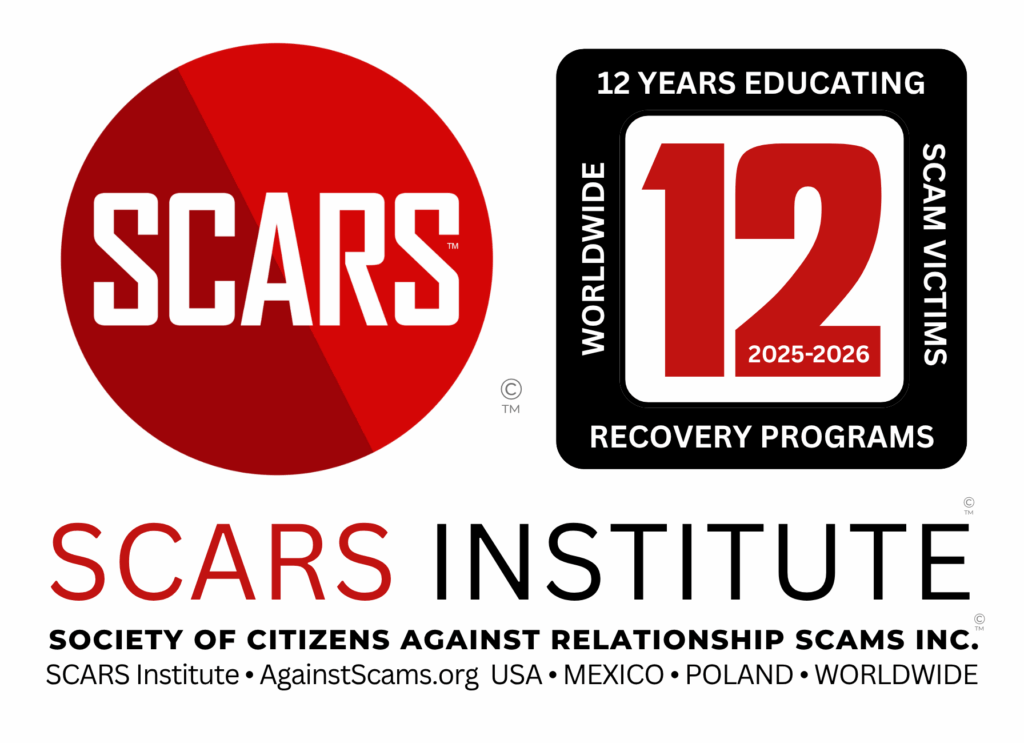
Sleep Nightmares and the Traumatized Scam Victim
Understanding Dreams and Nightmares: A Journey Towards Healing Sleep for Traumatized Scam Victims
Primary Category: Scam Victim Recovery Psychology
Author:
• Tim McGuinness, Ph.D., DFin, MCPO, MAnth – Anthropologist, Scientist, Polymath, Director of the Society of Citizens Against Relationship Scams Inc.
Author Biographies Below
About This Article
Trauma survivors, particularly those who have experienced scams, often grapple with the profound impact of nightmares on their emotional and physical well-being. These nightmares can disrupt sleep, trigger intense emotions, and lead to avoidance behaviors and hyperarousal, significantly affecting daily life and relationships. Understanding the various types of dreams and nightmares, from bad dreams to complex and PTSD-related nightmares, is crucial for developing effective coping strategies. By employing techniques such as imagery rehearsal therapy, cognitive processing therapy, and mindfulness, individuals can begin to process their traumatic experiences and reduce the frequency and intensity of nightmares. Seeking support from mental health professionals and engaging in self-care practices can further enhance resilience and promote healing. Ultimately, recognizing the complex nature of nightmares and taking proactive steps to address them can empower trauma survivors to reclaim their lives and find a path to recovery.
Note: This article is intended for informational purposes and does not replace professional medical advice. If you are experiencing distress, please consult a qualified mental health professional.

Find a Professional Sleep Therapist
If you’re a scam victim experiencing sleep disruption, including nightmares, it’s important to seek help from a professional sleep specialist therapist. These experts are trained to understand the complex relationship between trauma, sleep, and emotional well-being. They can provide you with personalized strategies and therapies, such as cognitive behavioral therapy for insomnia (CBT-I) or imagery rehearsal therapy (IRT), to improve your sleep quality and reduce the impact of nightmares. Don’t hesitate to reach out for support; taking this step can significantly enhance your healing journey and overall quality of life.
Understanding Dreams and Nightmares: A Journey Towards Healing Sleep for Traumatized Scam Victims
Introduction to Dreams & Nightmares
As a traumatized scam victim, you may find yourself grappling with vivid and distressing nightmares that can disrupt your sleep and affect your daily life.
Dreams and nightmares are complex phenomena that can provide insight into your emotional state and help you process traumatic experiences. In this article, we will explore the nature of dreams and nightmares, their types, and their impact on both normal individuals and those who have experienced trauma, such as scam victims. Our goal is to provide you with a deeper understanding of these experiences and offer strategies for coping and healing.
The Science Behind Dreams and Nightmares
Dreams are a universal human experience, occurring during the rapid eye movement (REM) stage of sleep. They appear to affect all mammals, and even octopus.
During this phase, your brain becomes highly active, and you may experience a range of emotions, from joy and excitement to fear and anxiety. Nightmares, on the other hand, are dreams that evoke strong negative emotions, such as fear, anxiety, or sadness, and often involve threatening or disturbing content.
Research has shown that dreams and nightmares serve important functions in our psychological well-being. They can help us process emotional experiences, consolidate memories, and even enhance our creativity. For traumatized individuals, dreams and nightmares can be a way for the brain to reprocess traumatic events and integrate them into a coherent narrative – a form of reframing.
Types of Dreams and Nightmares: A Comprehensive Exploration
Dreams and nightmares are a fascinating and complex aspect of human experience, offering insights into our emotional and psychological states. As a traumatized scam victim, understanding the different types of dreams and nightmares can help you navigate your own experiences and find pathways to healing. Let’s delve into the various types, their characteristics, and their potential impacts on your well-being.
Bad Dreams
Bad dreams are often the first step on the spectrum of distressing sleep experiences. They are moderately distressing dreams that, unlike nightmares, do not typically cause you to wake up. Bad dreams might leave you feeling uneasy or anxious, but they do not usually disrupt your sleep cycle. You might find yourself experiencing bad dreams more frequently during periods of stress or emotional turmoil. These dreams can be a gentle nudge from your subconscious, signaling that something is amiss in your waking life.
For example, you might dream of being in a crowded room where everyone is whispering, and you can’t make out what they are saying. This dream might leave you with a sense of unease or confusion, but it won’t jolt you awake. Bad dreams can be a precursor to more intense nightmares, serving as a warning sign that your mind is processing unresolved emotions or experiences.
Nightmares
Nightmares are a more intense and disturbing form of bad dreams. Researchers define nightmares as distressing dreams that cause you to awaken because of their frightening imagery or the emotions they evoke. Nightmares are often elaborate and well-remembered, leaving a lasting impression on your consciousness. They typically occur during the rapid eye movement (REM) stage of sleep, which is the phase associated with vivid dreaming and emotional processing.
Nightmares are most frequent between the ages of 6 and 10, a time when children are developing their understanding of the world and may be more susceptible to fears and anxieties. However, occasional nightmares are common in people of all ages, and their frequency can increase during periods of high stress or trauma. For instance, you might dream of being chased by an unknown assailant, feeling a palpable sense of fear and urgency that wakes you up with your heart racing.
The impact of nightmares can be profound, affecting not only your sleep quality but also your emotional state during the day. You might find yourself feeling anxious, irritable, or exhausted, as the memory of the nightmare lingers in your mind. Over time, frequent nightmares can lead to a cycle of fear and avoidance, where the anticipation of another nightmare makes it difficult to fall asleep or stay asleep.
PTSD-Related Nightmares
For those who have experienced trauma, such as scam victims, nightmares can take on a particularly distressing form known as PTSD-related nightmares. These nightmares are common after a traumatic event, affecting up to 70% of people with posttraumatic stress disorder (PTSD). Unlike nontraumatic nightmares, PTSD-related nightmares often closely replicate the traumatic event, forcing you to relive the pain and fear associated with the experience.
PTSD-related nightmares are unique in that they can occur across all stages of sleep, not just during REM sleep. This means that you might experience these nightmares at any point during your sleep cycle, making them even more unpredictable and disruptive. For example, if you were a victim of a romance scam, you might dream of the moment you realized you had been deceived, feeling the same sense of betrayal and humiliation as when it first happened.
The impact of PTSD-related nightmares can be devastating, as they continually reinforce the traumatic memory, making it difficult to process and move forward. You might find yourself avoiding reminders of the trauma, experiencing hyperarousal, or struggling with emotional numbing. These nightmares can also contribute to a sense of isolation, as you may feel that no one else can understand the depth of your pain.
Complex Nightmares
Recent research has begun to explore a phenomenon known as “complex” nightmares, which are trauma-related nightmares that coexist with sleep apnea. Sleep apnea is a sleep disorder characterized by pauses in breathing or periods of shallow breathing during sleep. When your sleep architecture is disturbed by disordered breathing, you may be less likely to remember the content of your nightmares, but the emotional impact can still be significant.
Complex nightmares can be particularly challenging to identify and treat, as the symptoms of sleep apnea, such as daytime fatigue and difficulty concentrating, can overshadow the emotional distress caused by the nightmares. You might wake up feeling unrested and confused, with fragments of disturbing dreams lingering in your mind but no clear recollection of their content.
Managing complex nightmares often requires a dual approach, addressing both the sleep apnea and the underlying trauma. Treating sleep apnea with continuous positive airway pressure (CPAP) therapy or other interventions can improve your sleep quality and potentially reduce the frequency and intensity of your nightmares. Additionally, therapies such as cognitive processing therapy (CPT) or imagery rehearsal therapy (IRT) can help you process the emotional content of your nightmares and develop coping strategies.
Sleep Terrors
Sleep terrors, also known as night terrors, are a type of parasomnia that occurs during slow-wave non-REM sleep, usually in the first half of the night. Unlike nightmares, sleep terrors do not involve vivid dreaming but are characterized by intense fear, screaming, and physical agitation. During a sleep terror, you might sit up in bed, scream, or even run around the room, but you are typically not fully awake and may not remember the episode upon waking.
Sleep terrors can be particularly frightening for both the individual experiencing them and any witnesses, such as family members or roommates. You might find yourself waking up in a state of confusion and disorientation, with no memory of the terror itself. Sleep terrors are more common in children but can also affect adults, especially those who have experienced trauma or have underlying sleep disorders.
The impact of sleep terrors can be significant, as they can disrupt your sleep and the sleep of those around you. You might feel embarrassed or ashamed, especially if you have no memory of the episodes. Additionally, the physical exertion and emotional distress associated with sleep terrors can leave you feeling exhausted and irritable during the day.
Lucid Dreams
Lucid dreams are a unique and potentially empowering type of dream, where you become aware that you are dreaming and may even gain some control over the dream content. During a lucid dream, you might realize that you are in a dream and choose to explore your dream environment, interact with dream characters, or even change the course of the dream.
Lucid dreaming can be a powerful tool for personal growth and healing, as it allows you to confront and resolve emotional issues in a safe and controlled environment. For example, if you are experiencing anxiety related to your scam experience, you might use a lucid dream to practice coping strategies or visualize a positive outcome. Lucid dreaming techniques, such as reality testing and dream journaling, can help you develop the awareness and control necessary to engage in lucid dreams more frequently.
Recurring Dreams
Recurring dreams are dreams that repeat with similar or identical content over time. These dreams often reflect unresolved conflicts or emotions and can be particularly common among trauma survivors. Recurring dreams can serve as a reminder that there are aspects of your experience that your mind is still processing and integrating.
For instance, you might have a recurring dream about being in a crowded room where everyone is turning their back on you, leaving you feeling isolated and alone. This dream might repeat with slight variations, but the underlying theme of rejection and abandonment remains constant. Recurring dreams can be a sign that your subconscious (parts) is trying to communicate an important message or emotion that needs to be addressed.
Healing Dreams
While nightmares and disturbing dreams can be challenging, it’s important to recognize that dreams can also be a source of healing and growth. Healing dreams are dreams that provide insights, comfort, or even solutions to your challenges. These dreams can offer a sense of resolution and help you integrate your traumatic experience into your life narrative.
Healing dreams might take the form of a comforting presence, a symbolic representation of your strength, or a vision of a brighter future. For example, you might dream of a wise figure offering you guidance and support, helping you to see your situation from a new perspective. Healing dreams can be a powerful reminder of your resilience and your capacity for growth and transformation.
Understanding the Different Types of Dreams
Understanding the different types of dreams and nightmares can provide you with valuable insights into your emotional and psychological state. Whether you are experiencing bad dreams, nightmares, PTSD-related nightmares, complex nightmares, sleep terrors, lucid dreams, recurring dreams, or healing dreams, each type offers a unique window into your inner world.
As you navigate your journey of healing, remember that dreams and nightmares are a natural part of the human experience, especially for those who have experienced trauma. By developing an awareness of the different types of dreams and employing coping strategies, you can begin to transform your nightmares into a source of strength and resilience. With patience, self-compassion, and the right tools, you can reclaim your sleep and your emotional well-being, one dream at a time.
The Impact of Nightmares on Trauma Survivors
For traumatized scam victims, nightmares can be a profound and distressing experience. They may re-live the betrayal, loss, and humiliation associated with the scam, leading to a cycle of fear and anxiety. The impact of nightmares on trauma survivors can be far-reaching, affecting not only their sleep but also their emotional well-being, relationships, and overall quality of life. Understanding these impacts is crucial for developing effective coping strategies and seeking the support you need to heal.
Overview
Common effects of nightmares on trauma survivors include:
- Sleep Disturbances: Frequent nightmares can lead to insomnia, fragmented sleep, and a constant sense of fatigue.
- Emotional Dysregulation: Nightmares can trigger intense emotions, such as fear, anger, and sadness, which may be difficult to manage during the day.
- Avoidance Behaviors: To escape the distress of nightmares, some individuals may avoid situations that remind them of the trauma or even avoid sleep altogether.
- Hyperarousal: Nightmares can contribute to a state of hyperarousal, where the individual feels constantly on edge and alert to potential threats.
- And more – see below
In-Depth
Sleep Disturbances
One of the most immediate and noticeable effects of nightmares on trauma survivors is sleep disturbances. Frequent nightmares can disrupt your sleep cycle, leading to insomnia, fragmented sleep, and a constant sense of fatigue. You might find yourself lying awake at night, dreading the onset of sleep because you fear the nightmares that await you. This fear can create a vicious cycle, where the anticipation of nightmares makes it even harder to fall asleep, further exacerbating your sleep problems.
The lack of quality sleep can have a cascading effect on your daily life. You might wake up feeling exhausted and unrefreshed, with a persistent sense of grogginess that lingers throughout the day. This fatigue can impair your cognitive functions, making it difficult to concentrate, remember information, or perform tasks that require mental clarity. Over time, chronic sleep deprivation can lead to a range of health issues, including weakened immune function, increased risk of heart disease, and even changes in mood and behavior.
Moreover, the disruption of your sleep cycle can affect your body’s natural rhythms, including the production of hormones such as cortisol and melatonin. These hormones play a crucial role in regulating your stress response and sleep-wake cycle. When their production is disrupted, you may experience heightened stress levels, further contributing to your emotional dysregulation and making it even more challenging to manage the intense emotions triggered by your nightmares.
Emotional Dysregulation
Nightmares can trigger a range of intense emotions, such as fear, anger, and sadness, which may be difficult to manage during the day. Emotional dysregulation is a common effect of nightmares on trauma survivors, as the vivid and disturbing content of these dreams can leave you feeling overwhelmed and out of control. You might experience sudden and intense emotional reactions to seemingly minor triggers, as your mind associates these triggers with the traumatic experiences replayed in your nightmares.
For example, a simple phone call or text message might trigger a wave of anxiety, reminding you of the deception and manipulation you experienced during the scam. These emotional reactions can be unpredictable and intense, making it challenging to maintain stable relationships and perform daily tasks. You might find yourself snapping at loved ones, withdrawing from social interactions, or avoiding situations that you perceive as potentially threatening.
Emotional dysregulation can also lead to a sense of disconnection from your emotions, where you feel numb or detached from your feelings. This emotional numbing is a coping mechanism that your brain employs to protect you from the overwhelming pain and fear associated with your nightmares. However, it can also make it difficult for you to experience positive emotions and find joy in your daily life.
To manage emotional dysregulation, it’s essential to develop healthy coping strategies. This might include practicing mindfulness and meditation, engaging in creative activities that allow you to express your emotions, or seeking support from a therapist who can help you process your feelings in a safe and non-judgmental environment. By learning to recognize and regulate your emotions, you can begin to reclaim a sense of control and stability in your life.
Avoidance Behaviors
To escape the distress of nightmares, some individuals may resort to avoidance behaviors. These behaviors can take many forms, from avoiding situations that remind you of the trauma to avoiding sleep altogether. While avoidance might provide temporary relief, it can also perpetuate the cycle of fear and anxiety, making it more difficult for you to heal and move forward.
For instance, you might avoid social gatherings or online platforms where you first encountered the scammer, fearing that these environments will trigger nightmares or flashbacks. This avoidance can lead to social isolation, as you withdraw from the very connections that could provide you with support and comfort. Over time, this isolation can exacerbate your feelings of loneliness and despair, making it even more challenging to cope with your nightmares.
Another common avoidance behavior is avoiding sleep. You might stay up late into the night, engaging in activities that keep you awake, such as watching TV, browsing the internet, or working on projects. While this might help you avoid nightmares in the short term, it can also lead to chronic sleep deprivation and its associated health risks. Additionally, the buildup of sleep debt can make you more susceptible to nightmares when you finally do fall asleep, creating a cycle that is difficult to break.
To overcome avoidance behaviors, it’s important to gradually expose yourself to the situations and emotions you have been avoiding. This process, known as exposure therapy, can help you desensitize to your fears and develop a greater sense of control over your reactions. With the support of a therapist, you can learn to face your nightmares and the underlying trauma, developing the resilience and coping skills necessary to heal.
Hyperarousal
Nightmares can contribute to a state of hyperarousal, where you feel constantly on edge and alert to potential threats. This heightened state of arousal is a natural response to the fear and anxiety triggered by your nightmares, as your body prepares to face potential dangers. However, when this state becomes chronic, it can have a profound impact on your physical and emotional well-being.
Hyperarousal can manifest in various ways, including increased heart rate, rapid breathing, muscle tension, and a heightened startle response. You might find yourself jumping at sudden noises, feeling jittery and restless, or experiencing a constant sense of unease. This state of heightened alertness can make it difficult for you to relax and enjoy moments of peace, as your mind is constantly scanning for potential threats.
The chronic activation of your stress response system can also have long-term health consequences. Prolonged exposure to stress hormones, such as cortisol and adrenaline, can weaken your immune system, increase your risk of cardiovascular disease, and even alter the structure and function of your brain. Additionally, hyperarousal can interfere with your ability to form and maintain healthy relationships, as your constant state of alertness can make you seem distant, irritable, or unpredictable to others.
To manage hyperarousal, it’s essential to develop relaxation techniques and self-care practices that promote a sense of calm and safety. This might include deep breathing exercises, progressive muscle relaxation, yoga, or other mindfulness-based practices. Creating a soothing bedtime routine and ensuring a comfortable sleep environment can also help you feel more at ease and reduce the likelihood of nightmares.
Moreover, engaging in regular physical activity can be a powerful tool for managing hyperarousal. Exercise releases endorphins, which are natural mood elevators, and can help reduce stress and anxiety. By incorporating physical activity into your daily routine, you can improve your overall well-being and develop a greater sense of control over your emotional state.
Cognitive and Memory Impairments
The impact of nightmares on trauma survivors extends beyond emotional and behavioral effects to include cognitive and memory impairments. Chronic sleep disruption and the emotional toll of nightmares can significantly impair your cognitive functions, making it difficult to concentrate, remember information, and perform complex tasks. You might find yourself struggling with tasks that were once routine, such as following instructions, completing projects, or even holding a conversation.
Memory impairments are another common effect of nightmares on trauma survivors. The emotional intensity of nightmares can interfere with your ability to form and retrieve memories, leading to gaps in your recollection of events and experiences. This can be particularly challenging if you are trying to piece together the details of the scam or process the emotional impact of the trauma.
Moreover, the cognitive load of managing nightmares and their emotional fallout can leave you with less mental bandwidth for other aspects of your life. You might find it difficult to focus on work, school, or personal projects, as your mind is constantly preoccupied with the fear and anxiety triggered by your nightmares. This can lead to a sense of frustration and inadequacy, further exacerbating your emotional distress.
To mitigate the cognitive and memory impairments associated with nightmares, it’s important to prioritize self-care and seek support. Engaging in cognitive exercises, such as puzzles or brain training games, can help improve your memory and attention span. Additionally, working with a therapist or counselor can provide you with strategies for managing the emotional impact of nightmares and developing healthier coping mechanisms.
Social and Relationship Impacts
The impact of nightmares on trauma survivors can also extend to your social and relationship dynamics. The emotional dysregulation, avoidance behaviors, and hyperarousal associated with nightmares can strain your relationships with friends, family, and partners. You might find yourself withdrawing from social interactions, avoiding intimate connections, or experiencing conflicts with loved ones due to your heightened emotional state.
For example, you might snap at your partner or children over seemingly minor issues, as your emotions are already heightened by the nightmares. This can lead to a cycle of guilt and resentment, where you feel bad for your outbursts but also resentful of the emotional burden placed on you. Over time, these dynamics can erode the trust and intimacy in your relationships, making it more challenging to seek and receive the support you need.
Moreover, the social isolation that often accompanies nightmares and trauma can leave you feeling disconnected and alone. You might avoid social gatherings or online communities, fearing that these environments will trigger nightmares or remind you of the scam. This isolation can exacerbate your feelings of loneliness and despair, making it more difficult to heal and move forward.
To address the social and relationship impacts of nightmares, it’s essential to communicate openly with your loved ones about your experiences and seek their support. Joining support groups or therapy sessions can also provide you with a sense of community and understanding, as you connect with others who have gone through similar experiences. By nurturing your relationships and seeking the support you need, you can begin to rebuild a sense of connection and belonging, even in the face of your nightmares.
Professional and Financial Consequences
The impact of nightmares on trauma survivors can also have professional and financial repercussions. The cognitive and emotional challenges associated with nightmares can make it difficult to perform at work, leading to decreased productivity, missed deadlines, and even job loss. You might find yourself struggling to meet the demands of your job, as your mind is constantly preoccupied with the fear and anxiety triggered by your nightmares.
Additionally, the financial losses incurred during the scam, combined with the potential loss of income due to work-related challenges, can create a significant financial burden. This can lead to a sense of insecurity and stress, further exacerbating your emotional distress and making it more difficult to cope with your nightmares.
To manage the professional and financial consequences of nightmares, it’s important to develop a support plan that addresses both your emotional and practical needs. This might include seeking accommodations at work, such as flexible hours or remote work options, to help you manage your sleep and emotional well-being. Additionally, working with a financial advisor or counselor can provide you with strategies for managing your finances and rebuilding your economic stability.
Pathways to Healing and Resilience
While the impact of nightmares on trauma survivors can be profound and far-reaching, it’s important to remember that healing and resilience are possible. By understanding the various effects of nightmares and developing effective coping strategies, you can begin to reclaim your sleep, your emotional well-being, and your quality of life.
One of the most powerful tools for healing is seeking support from a mental health professional who specializes in trauma and nightmares. Therapies such as cognitive processing therapy (CPT), imagery rehearsal therapy (IRT), and eye movement desensitization and reprocessing (EMDR) can provide you with the skills and strategies necessary to process your emotions, reduce the intensity of your nightmares, and develop a greater sense of control over your experiences.
Additionally, engaging in self-care practices that promote relaxation and emotional regulation can be incredibly beneficial. This might include mindfulness and meditation, deep breathing exercises, progressive muscle relaxation, or creative activities such as journaling, painting, or music. By nurturing your mind and body, you can develop a greater sense of resilience and adaptability in the face of your nightmares.
Remember, you are not alone in your journey. Many others have walked this path and found ways to heal and thrive. With patience, self-compassion, and the right support, you too can transform your nightmares into a source of strength and resilience, reclaiming your life one step at a time.
Coping Strategies for Nightmares
While nightmares can be challenging, there are several strategies you can employ to cope with and eventually overcome them:
- Imagery Rehearsal Therapy (IRT): This cognitive-behavioral therapy technique involves rescripting the nightmare in a way that makes it less frightening. By changing the outcome or introducing a protective figure, you can reduce the emotional impact of the nightmare.
- Cognitive Processing Therapy (CPT): CPT helps you identify and challenge negative thoughts and beliefs associated with the trauma. By processing the emotional content of the nightmare, you can gain a new perspective and reduce its intensity.
- Mindfulness and Meditation: Practicing mindfulness and meditation can help you develop a greater awareness of your thoughts and emotions, allowing you to observe nightmares without becoming overwhelmed by them.
- Sleep Hygiene: Maintaining good sleep hygiene, such as keeping a consistent sleep schedule, creating a relaxing bedtime routine, and ensuring a comfortable sleep environment, can improve the quality of your sleep and reduce the frequency of nightmares.
- Support Groups and Therapy: Connecting with others who have experienced similar traumas can provide a sense of community and understanding. Individual or group therapy can also offer a safe space to explore and process your emotions.
The Healing Power of Dreams
While nightmares can be distressing, dreams also have the potential to be a source of healing and growth. Many trauma survivors report having dreams that provide insights, comfort, or even solutions to their challenges. These healing dreams can offer a sense of resolution and help you integrate the traumatic experience into your life narrative.
To cultivate healing dreams, you can:
- Keep a Dream Journal: Writing down your dreams can help you remember them more vividly and identify patterns or themes that may be significant. Your recovery journal can also serve for this.
- Engage in Creative Activities: Activities such as painting, drawing, or writing can help you explore the emotional content of your dreams and gain a deeper understanding of their meaning.
- Practice Self-Compassion: Be kind and compassionate towards yourself as you navigate the complexities of your dreams and nightmares. Acknowledging your experiences without judgment can foster a greater sense of self-acceptance and resilience.
Conclusion
Dreams and nightmares are complex and often misunderstood aspects of the human experience. For traumatized scam victims, they can be both a challenge and an opportunity for healing. By understanding the science behind dreams, recognizing the types of nightmares you may experience, and employing coping strategies, you can begin to reclaim your sleep and your emotional well-being.
Remember, you are not alone in your journey. Many others have walked this path and found ways to heal and thrive. With patience, self-compassion, and the right tools, you too can transform your nightmares into a source of strength and resilience.

Glossary
- Arousal rebound — This describes a spike in alertness after stress or sleep loss that makes falling back asleep difficult. It often follows a frightening dream and can keep the body on edge. A short routine of slow breathing and light stretching can help lower the surge.
- Bad dreams — This refers to unsettling dreams that cause distress but usually do not wake the sleeper. They often reflect daily stress or unresolved worry. Keeping a brief log can reveal patterns that are manageable.
- Bedtime anchoring — This means using the same simple, calming steps before bed each night. Repeated cues teach the brain that sleep is coming. A steady anchor reduces nightmare frequency and eases bedtime fear.
- Complex nightmares — This term covers trauma-related nightmares that occur alongside sleep apnea or other breathing issues. The dream may not be remembered clearly, yet the person wakes drained and uneasy. Treating the breathing problem often reduces the dreams.
- Coping script — This is a short, prepared message a person says to themselves upon waking from a bad dream. It names safety, time, and place. A clear script can stop panic from escalating.
- Cortisol awakening response — This refers to the normal morning rise of a stress hormone that helps people feel alert. After rough nights, the rise can feel too sharp. Gentle light exposure and a calm breakfast routine can smooth it.
- Dream journaling — This is the practice of writing down dreams soon after waking. Notes improve recall and reveal themes worth discussing with a counselor. Over time, journaling can lessen fear and increase a sense of control.
- Dream rescripting — This technique changes the storyline of a recurring nightmare while awake. The person designs a safer or stronger ending and practices it daily. The brain often adopts the new version during sleep.
- Emotional flooding — This describes a surge of fear, shame, or anger after a disturbing dream. Thinking narrows and the body tenses. Grounding skills bring the mind back to the present.
- EMDR (Eye Movement Desensitization and Reprocessing) — This therapy helps the brain reprocess traumatic memories that fuel nightmares. Sets of eye movements or taps are paired with brief recall. Many survivors report fewer intrusive dreams after treatment.
- Exposure hierarchy — This is a stepwise plan to face avoided sleep cues, such as turning off the TV or switching off a bright light. Small wins build confidence. Progress is measured, not rushed.
- Grounding exercise — This is a simple sensory routine used after waking from a nightmare. It names sights, sounds, textures, and safe facts about the current room. Grounding tells the brain the danger has passed.
- Healing dream — This is a dream that brings insight, comfort, or a sense of strength. It may offer a symbol of safety or a next step for recovery. Recording these dreams can support hope.
- Hyperarousal — This state means the nervous system stays on alert as if danger is present. Sleep becomes light and fragmented, and small noises trigger startle. Calming routines teach the body to stand down.
- Hypnagogic imagery — This refers to brief, vivid images or sensations that appear as a person drifts into sleep. They can feel startling after trauma but are not a sign of harm. Slow breathing and a soft light can reduce their impact.
- Hypnopompic imagery — This describes vivid perceptions that occur when waking from sleep. They sometimes follow nightmares and blur into the room. Naming them as a normal sleep event lowers fear.
- Imagery Rehearsal Therapy (IRT) — This is a structured method to reduce nightmares by rewriting them while awake. The person practices the new script daily like a short scene. Many find frequency and intensity drop within weeks.
- Insomnia — This sleep disorder involves difficulty falling asleep, staying asleep, or waking too early. Nightmares can both cause and worsen it. A steady schedule and stimulus control are first-line steps.
- Lucid dreaming — This means becoming aware of dreaming while still asleep. Some people learn to shift a nightmare toward safety once lucid. Gentle training and consistent sleep help this skill grow.
- Nightmare — This is a vividly disturbing dream that wakes the sleeper with fear, grief, or anger. The images are often remembered and can affect the next day. Tracking, rescripting, and therapy reduce recurrence.
- Nightmare aftershock — This term captures the shaky, exhausted feeling that lingers after a harsh dream. Concentration dips and irritability rises. Hydration, light movement, and daylight exposure shorten the aftershock.
- Panic awakening — This describes waking abruptly with racing heart and dread, sometimes without clear dream recall. It is a common trauma reaction. Slow exhalations and sitting upright can restore calm.
- Parasomnia — This category includes unusual behaviors during sleep, such as sleep terrors or sleepwalking. Episodes can be dramatic yet are usually brief. Safety measures in the bedroom reduce risk.
- Post-traumatic cognitions — These are stuck thoughts that follow trauma and often replay in dreams. Examples include self-blame and permanent danger beliefs. Cognitive therapies help test and soften these thoughts.
- PTSD-related nightmare — This is a dream that repeats parts of a traumatic event or its themes. It can occur in any sleep stage and disrupts recovery. Evidence-based treatments can reduce both frequency and distress.
- Reassurance object — This is a small item kept by the bed that signals safety, such as a note, photo, or comfort item. Touching it after a nightmare restores orientation. Many find it steadies breathing.
- REM sleep — This is the stage of sleep most linked with vivid dreaming and emotional processing. Trauma can make REM more intense and fragmented. Stable routines tend to normalize it over time.
- Safety plan for sleep — This plan lists steps to take before bed and after a nightmare. It includes contacts, skills, and health appointments. A written plan reduces panic and guesswork at 3 a.m.
- Sleep apnea — This disorder causes pauses in breathing during sleep, leading to fragmented rest and morning fatigue. It can worsen nightmares and mood symptoms. Medical evaluation and treatment improve both sleep and dreams.
- Sleep hygiene — This refers to habits that protect sleep quality, such as a consistent schedule, a dark, cool room, and limited late caffeine. Good hygiene lowers the chance of nightmare clusters. It also supports therapy progress.
- Sleep inertia — This is the heavy, foggy feeling after waking, which can be stronger after disturbing dreams. Gentle light and movement shorten it. Planning a simple first task helps the day start.
- Sleep restriction therapy — This behavioral method limits time in bed to match actual sleep time, then expands it gradually. It consolidates sleep and reduces middle-of-the-night wakefulness. Professional guidance improves results.
- Sleep terrors — These non-REM events involve sudden screams, intense fear, and confusion, usually without clear dream recall. They are more common under stress or sleep loss. Keeping the environment safe and addressing triggers are key.
- Stimulus control — This technique teaches the brain to link bed with sleep and comfort, not worry. It asks the person to leave bed if unable to sleep and return when drowsy. Consistency rebuilds the association.
- Trauma anniversary reaction — This is a spike in symptoms near dates tied to the scam or its discovery. Nightmares may intensify without warning. Marking the calendar and planning support can blunt the wave.
- Trigger stacking — This describes multiple small stressors that combine to trip a nightmare cycle. The load can include headlines, bills, and reminders. Early relief of small stressors prevents overload.
- Window of tolerance — This term defines the arousal range where a person can think and feel without being overwhelmed. Nightmares can push outside that window. Skills and support widen it so healing work can proceed.
Reference
- Lifetime prevalence rates of sleep paralysis: A systematic review https://doi.org/10.1016/j.smrv.2011.01.007
- Nightmares in adults: Symptoms, causes, and innovative, science-backed therapies https://www.apa.org/monitor/2024/10/science-of-nightmares
Author Biographies
Please Rate This Article
Please Leave Us Your Comment Below
Also, tell us of any topics we might have missed.
-/ 30 /-
What do you think about this?
Please share your thoughts in a comment above!
ARTICLE RATING
TABLE OF CONTENTS
- Understanding Dreams and Nightmares: A Journey Towards Healing Sleep for Traumatized Scam Victims
- Understanding Dreams and Nightmares: A Journey Towards Healing Sleep for Traumatized Scam Victims
- Introduction to Dreams & Nightmares
- The Science Behind Dreams and Nightmares
- Types of Dreams and Nightmares: A Comprehensive Exploration
- The Impact of Nightmares on Trauma Survivors
- Pathways to Healing and Resilience
- Coping Strategies for Nightmares
- The Healing Power of Dreams
- Conclusion
- Glossary
- Reference
CATEGORIES
U.S. & Canada Suicide Lifeline 988
![NavyLogo@4x-81[1] Sleep Nightmares and the Traumatized Scam Victim - 2025](https://scamsnow.com/wp-content/uploads/2025/04/NavyLogo@4x-811.png)
ARTICLE META
Important Information for New Scam Victims
- Please visit www.ScamVictimsSupport.org – a SCARS Website for New Scam Victims & Sextortion Victims.
- SCARS Institute now offers its free, safe, and private Scam Survivor’s Support Community at www.SCARScommunity.org – this is not on a social media platform, it is our own safe & secure platform created by the SCARS Institute especially for scam victims & survivors.
- SCARS Institute now offers a free recovery learning program at www.SCARSeducation.org.
- Please visit www.ScamPsychology.org – to more fully understand the psychological concepts involved in scams and scam victim recovery.
If you are looking for local trauma counselors, please visit counseling.AgainstScams.org
If you need to speak with someone now, you can dial 988 or find phone numbers for crisis hotlines all around the world here: www.opencounseling.com/suicide-hotlines
Statement About Victim Blaming
Some of our articles discuss various aspects of victims. This is both about better understanding victims (the science of victimology) and their behaviors and psychology. This helps us to educate victims/survivors about why these crimes happened and not to blame themselves, better develop recovery programs, and help victims avoid scams in the future. At times, this may sound like blaming the victim, but it does not blame scam victims; we are simply explaining the hows and whys of the experience victims have.
These articles, about the Psychology of Scams or Victim Psychology – meaning that all humans have psychological or cognitive characteristics in common that can either be exploited or work against us – help us all to understand the unique challenges victims face before, during, and after scams, fraud, or cybercrimes. These sometimes talk about some of the vulnerabilities the scammers exploit. Victims rarely have control of them or are even aware of them, until something like a scam happens, and then they can learn how their mind works and how to overcome these mechanisms.
Articles like these help victims and others understand these processes and how to help prevent them from being exploited again or to help them recover more easily by understanding their post-scam behaviors. Learn more about the Psychology of Scams at www.ScamPsychology.org
SCARS INSTITUTE RESOURCES:
If You Have Been Victimized By A Scam Or Cybercrime
♦ If you are a victim of scams, go to www.ScamVictimsSupport.org for real knowledge and help
♦ SCARS Institute now offers its free, safe, and private Scam Survivor’s Support Community at www.SCARScommunity.org – this is not on a social media platform, it is our own safe & secure platform created by the SCARS Institute especially for scam victims & survivors.
♦ Enroll in SCARS Scam Survivor’s School now at www.SCARSeducation.org
♦ To report criminals, visit https://reporting.AgainstScams.org – we will NEVER give your data to money recovery companies like some do!
♦ Follow us and find our podcasts, webinars, and helpful videos on YouTube: https://www.youtube.com/@RomancescamsNowcom
♦ Learn about the Psychology of Scams at www.ScamPsychology.org
♦ Dig deeper into the reality of scams, fraud, and cybercrime at www.ScamsNOW.com and www.RomanceScamsNOW.com
♦ Scam Survivor’s Stories: www.ScamSurvivorStories.org
♦ For Scam Victim Advocates visit www.ScamVictimsAdvocates.org
♦ See more scammer photos on www.ScammerPhotos.com
You can also find the SCARS Institute’s knowledge and information on Facebook, Instagram, X, LinkedIn, and TruthSocial
Psychology Disclaimer:
All articles about psychology and the human brain on this website are for information & education only
The information provided in this and other SCARS articles are intended for educational and self-help purposes only and should not be construed as a substitute for professional therapy or counseling.
Note about Mindfulness: Mindfulness practices have the potential to create psychological distress for some individuals. Please consult a mental health professional or experienced meditation instructor for guidance should you encounter difficulties.
While any self-help techniques outlined herein may be beneficial for scam victims seeking to recover from their experience and move towards recovery, it is important to consult with a qualified mental health professional before initiating any course of action. Each individual’s experience and needs are unique, and what works for one person may not be suitable for another.
Additionally, any approach may not be appropriate for individuals with certain pre-existing mental health conditions or trauma histories. It is advisable to seek guidance from a licensed therapist or counselor who can provide personalized support, guidance, and treatment tailored to your specific needs.
If you are experiencing significant distress or emotional difficulties related to a scam or other traumatic event, please consult your doctor or mental health provider for appropriate care and support.
Also read our SCARS Institute Statement about Professional Care for Scam Victims – click here
If you are in crisis, feeling desperate, or in despair, please call 988 or your local crisis hotline.
More ScamsNOW.com Articles
A Question of Trust
At the SCARS Institute, we invite you to do your own research on the topics we speak about and publish. Our team investigates the subject being discussed, especially when it comes to understanding the scam victims-survivors’ experience. You can do Google searches, but in many cases, you will have to wade through scientific papers and studies. However, remember that biases and perspectives matter and influence the outcome. Regardless, we encourage you to explore these topics as thoroughly as you can for your own awareness.























![scars-institute[1] Sleep Nightmares and the Traumatized Scam Victim - 2025](https://scamsnow.com/wp-content/uploads/2025/04/scars-institute1.png)
![niprc1.png1_-150×1501-1[1] Sleep Nightmares and the Traumatized Scam Victim - 2025](https://scamsnow.com/wp-content/uploads/2025/04/niprc1.png1_-150x1501-11.webp)
